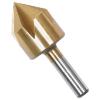Just posted a thread about case length in 223 cases & -Blue68f100- mentioned something
I have always had trouble with, removing factory primer pocket crimp from 223.
I have an RCBS Swager Tool that works most of the time on 30.06 & .308 but it never
has worked on the 223 which I have tons of cases primer crimped & ended up using a
Pocket Reamer on them which is slightly too much.
The Swager Tool just isn't enough & the Reamer is a little to much.
What do you guys do?
I can use the Reamed cases because the primer is snug but not like we are all used to
feeling when we press them in, I also use a sealer on them which probably doesn't grip
any better but gives them a better life span in case they aren't tight enough.
I have shot them in my Rem Tactical & they work fine with no sign of primer release
or any other problem also in my Encore Pistol. I wouldn't shoot them in an AR.
I have always had trouble with, removing factory primer pocket crimp from 223.
I have an RCBS Swager Tool that works most of the time on 30.06 & .308 but it never
has worked on the 223 which I have tons of cases primer crimped & ended up using a
Pocket Reamer on them which is slightly too much.
The Swager Tool just isn't enough & the Reamer is a little to much.
What do you guys do?
I can use the Reamed cases because the primer is snug but not like we are all used to
feeling when we press them in, I also use a sealer on them which probably doesn't grip
any better but gives them a better life span in case they aren't tight enough.
I have shot them in my Rem Tactical & they work fine with no sign of primer release
or any other problem also in my Encore Pistol. I wouldn't shoot them in an AR.



